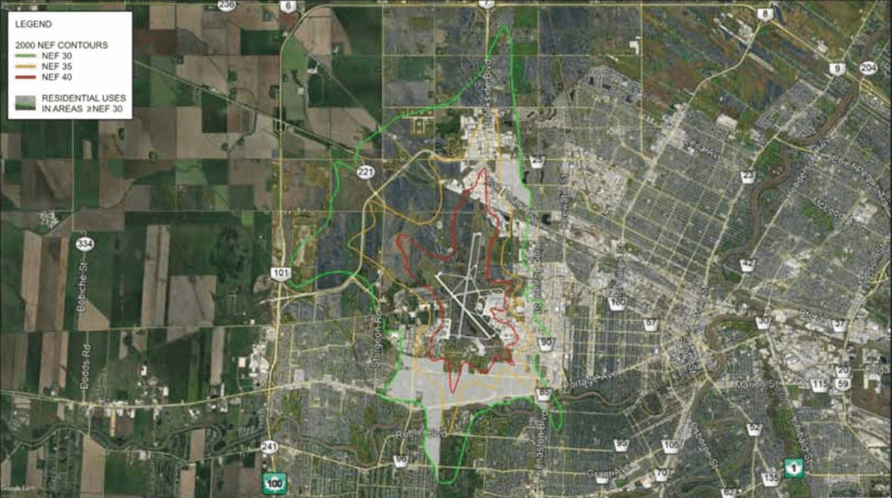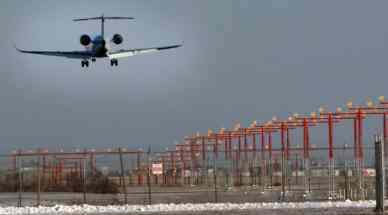City staff urges council to reject airport-area residential plan
Read this article for free:
or
Already have an account? Log in here »
To continue reading, please subscribe:
Monthly Digital Subscription
$1 per week for 24 weeks*
- Enjoy unlimited reading on winnipegfreepress.com
- Read the E-Edition, our digital replica newspaper
- Access News Break, our award-winning app
- Play interactive puzzles
*Billed as $4 plus GST every four weeks. Offer only available to new and qualified returning subscribers. Cancel any time.
Read unlimited articles for free today:
or
Already have an account? Log in here »
Hey there, time traveller!
This article was published 27/02/2020 (1831 days ago), so information in it may no longer be current.
Council is being asked to reject a long-debated plan to build homes closer to Winnipeg’s airport.
A new report calls on council to reject a development application that would allow 80 acres of land in the Polo Park area, including the partially developed old Winnipeg Stadium site, to become the home of a mixed-use development that includes multi-family buildings.
The Winnipeg Airports Authority has argued against residential construction there, due to its proximity to Richardson International Airport and its accompanying noise levels.
Now city staff appear to agree.

“The public service views the potential risk of threatening the 24-hour air operations of the Winnipeg Airport and planned expansion of the airport as outweighing the potential benefits,” the report notes.
One of the plan’s key developers, however, said the noise concerns are overblown.
Justin Zarnowski, the head lawyer for Shindico, pointed out there are already homes near the airport.
“So the notion that adding incremental density is somehow going to cause a huge spike in complaints… I haven’t seen any evidence from them to support that claim,” said Zarnowski.
Homes were built close to the transportation hub before Winnipeg’s Airport Vicinity Protection Area plan was put in place in 1994, severely restricting residential development.
Zarnowski said rejecting the development would prevent substantial new tax dollars from flowing into city coffers. He estimated each apartment would raise more than $1,500 in new annual property taxes.
He said the developers have been discussing their plans with the city for years, and further delays could lead them to invest elsewhere.
“Eventually, they’re going to get fed up,” he said.
Zarnowski insists the site is ideal for residential development, offering potential residents quick access to nearby retail outlets and restaurants.
Airport authority officials believe noise complaints from residents would threaten the airport’s 24-7 operations.
Tyler MacAfee, the WAA’s vice-president of communications, said friction with nearby residents has led other airports to restrict overnight operations in recent years and Winnipeg’s AVPA prevented that from happening here.
Homes were built close to the transportation hub before Winnipeg’s Airport Vicinity Protection Area plan was put in place in 1994, severely restricting residential development.
MacAfee said airport officials aren’t reassured by the argument that people moving to homes near an airport would expect, and accept, the noise.
“It’s great to say we’re going to tell them they’re living close to the airport and they can’t complain, but that’s not the way it works,” he said.
MacAfee said the airport is a key economic driver for Winnipeg that must be protected. He said the city would be better off updating its entire airport vicinity plan than allowing exceptions for this specific development and others like it.
“We can build a new plan… that will serve us well or we (could) end up with just amendment after amendment,” he said.
City staff recommend council turn down the proposal and rescind a previous first reading that supported a related bylaw, which the Assiniboia Community Committee will debate March 3. Council approval would be required to actually make the change.
Mayor Brian Bowman declined to weigh in on his vote Thursday, stating he’ll first spend more time reviewing the report.
Bowman said council must consider both its goal to encourage density in existing neighbourhoods and the need to protect the airport.
“We are grappling with the fact that Winnipeg’s growing and there (are) increasing demands on density and investment that we want to see with our city, along with the fact that we’ve got a 24-7 cargo airport that is an economic engine,” he said.
The report notes the airport supports about 17,000 jobs.
joyanne.pursaga@freepress.mb.ca
wfppdf:https://wfpquantum.s3.amazonaws.com/pdf/2020/88167_Polo Park Airport Vicinity Protection Area StudyAirport Noise and Adjacent Development Report.pdf|Polo Park Airport Vicinity Protection Area StudyAirport Noise and Adjacent Development Report:wfppd
Joyanne Pursaga
Reporter
Born and raised in Winnipeg, Joyanne loves to tell the stories of this city, especially when politics is involved. Joyanne became the city hall reporter for the Winnipeg Free Press in early 2020.
Our newsroom depends on a growing audience of readers to power our journalism. If you are not a paid reader, please consider becoming a subscriber.
Our newsroom depends on its audience of readers to power our journalism. Thank you for your support.








